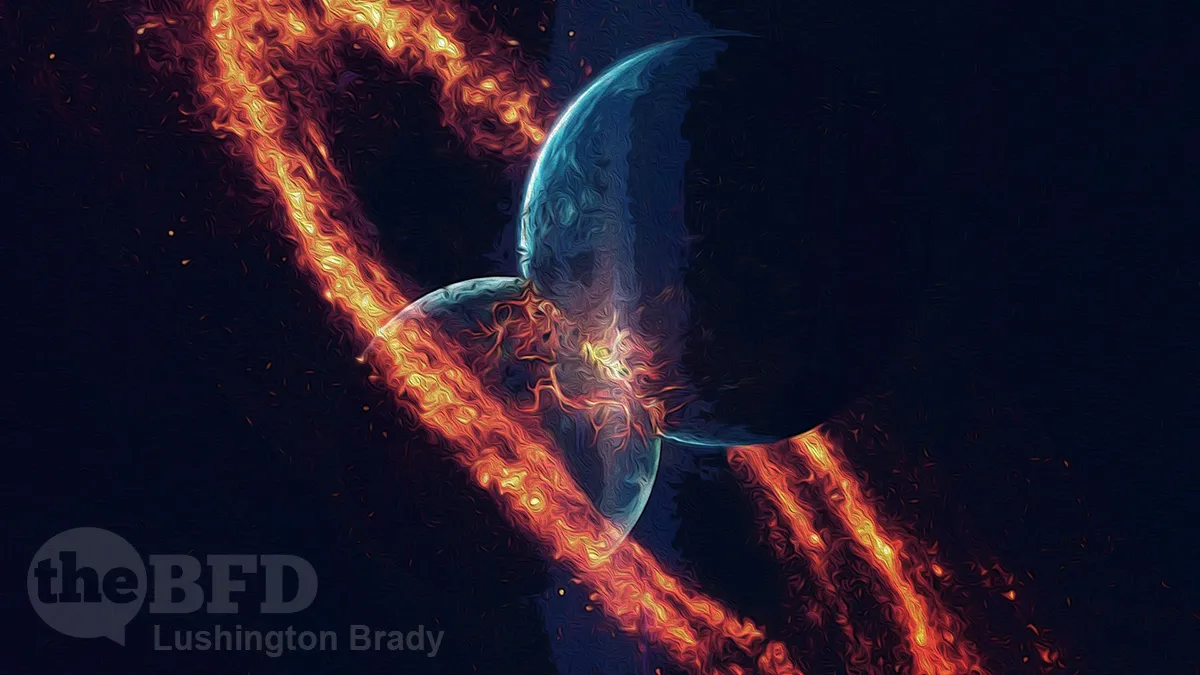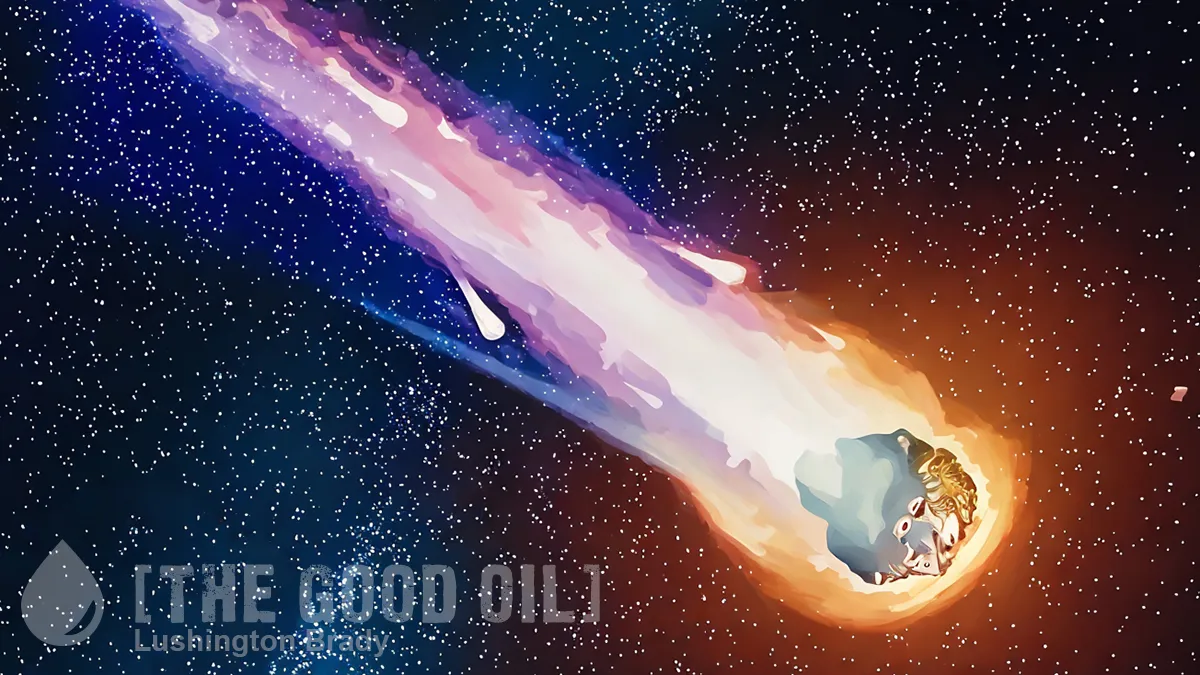When Worlds Collide is a classic of 1950s SF-disaster movies (though not as great as Earth vs the Flying Saucers). Its premise is pretty literal: a wandering star is on a collision course with Earth.
But it’s just science fiction, right? Given the vast emptiness of space, what are the odds of two planets actually colliding?
Slightly higher than none, as it turns out.
For the first time ever, scientists have discovered evidence of two planets crashing into each other in a spectacular collision.
These two distant exoplanets are thought to have been ice giants – like cold Neptunes – orbiting around a star about 1,800 light years from Earth, sending out huge plumes of dust and piercing light as they smashed into one another, a new study in the journal Nature has found.
The apparent cosmic collision was actually observed in 2021 (although, the laws of the universe being what they are, it would have happened nearly 2,000 years ago). It’s just taken astronomers a few years to figure out exactly what they’d seen.
The collision was first spotted by an amateur astronomer who noticed that the star system – named ASASSN-21qj – doubled in brightness at infrared wavelengths, before the star started to fade in visible light three years later. An international team of astronomers then studied the system for several years, concluding that it must have been caused by two planets colliding.
“To be honest, this observation was a complete surprise to me. When we originally shared the visible light curve of this star with other astronomers, we started watching it with a network of other telescopes,” co-lead author Matthew Kenworthy, an astronomer from Leiden University, in the Netherlands, said in a statement. “An astronomer on social media pointed out that the star brightened up in the infrared over a thousand days before the optical fading. I knew then this was an unusual event.”
Unusual, but… what, exactly, was the question facing scientists.
“We don’t know for sure what we are seeing but giant impact fits best,” Zoe Leinhardt, an associate professor of astrophysics at the UK’s University of Bristol, and paper co-author, told Newsweek. “The giant impact is the only event that we found that could simultaneously explain the large emission of infrared light (from the hot, extended planetary body formed by merger of the colliding bodies) and the transit of material across the star blocking the visible light (a load of debris produced in the collision).”
The researchers think that after the planets collided, the cloud of debris floated across the star after a few years, causing the observed dimming of the visible wavelengths. They hope to carry on studying the star system to learn more about the collision, what the planets were made from, and to watch what happens to the planetary remnants.
“It will be fascinating to observe further developments. Ultimately, the mass of material around the remnant may condense to form a retinue of moons that will orbit around this new planet,” Leinhardt said in the statement.
Newsweek
Observing this particular star is not just looking back in time, as all astronomical observations necessarily do, in the sense of the light from long-ago events only reaching us now.
It’s also a backward glance into what the infancy of our own Solar system may have been like.
Because ASASSN is, the scientists say, a very young (at just 300 million years old) solar-like star. The oldest-known rocks on Earth date to roughly the same age of the Solar system. It is thought that ‘giant impacts’, as collisions between planets are called, are common in the final stages of the formation of planets around a new star.
They dictate the final sizes, compositions, and thermal states of planets and mould the orbits of objects in those planetary systems.
In our solar system, giant impacts are thought to be responsible for the odd tilt of Uranus, the high density of Mercury and the existence of Earth’s Moon. However, until now, we had little direct evidence of giant impacts ongoing in the galaxy […]
If our interpretation of the events is correct, studying this star system could help us understand a key mechanism of planet formation. Even from the limited set of observations we have so far, we have learned some very interesting things.
The first is that the colliding planets must have been big. Much bigger than Earth, possibly as large as the ‘ice giant’ planets Uranus and Neptune.
The data also tells us something about the composition of the planets.
We estimate the temperature of the post-impact body to be around 700°C. For the temperature to be that low, the colliding bodies could not have been entirely made of rock and metal.
The outer regions of at least one of the planets must have contained elements with low boiling temperatures, such as in water […] the delay that was seen between the emission of infrared light and the observation of debris crossing the star suggests that the collision took place quite far away from the star.
The Conversation
In other words, the ASASSN system sounds very similar to our own, with giant, icy, outer planets. This is very different to most extra-solar systems which have so far been observed, which tend to feature tightly-packed planetary systems orbiting far closer to their star than our own.









